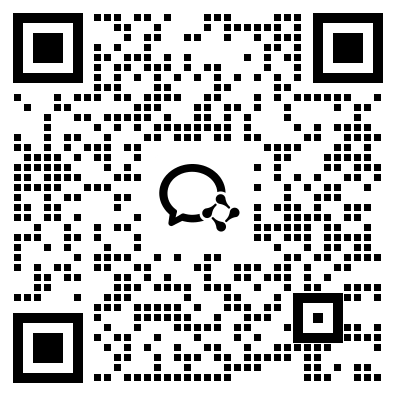2015年考研英语一新题型
摘要:考研英语真题是最好的复习资料,认真研读近十年的考研英语真题将会收到极大的成效,多做真题,反复做真题,仔细推敲真题。以下是为大家分享的2015年全国硕士研究生入学统一考试英语一真题。更多考研英语真题相关资讯,请关注希赛网英语频道。
Part B
Directions:
In the following text, some sentences have been removed. For Questions 41-45, choose the most suitable one from the fist A-G to fit into each of the numbered blanks. Mark your answers on ANSWER SHEET. (10 points)
How does your reading proceed? Clearly you try to comprehend, in the sense of identifying meanings for individual words and working out relationships between them, drawing on your explicit knowledge of English grammar (41) ______you begin to infer a context for the text, for instance, by making decisions about what kind of speech event is involved: who is making the utterance, to whom, when and where.
The ways of reading indicated here are without doubt kinds of of comprehension. But they show comprehension to consist not just passive assimilation but of active engagement inference and problem-solving. You infer information you feel the writer has invited you to grasp by presenting you with specific evidence and cues (42) _______
Conceived in this way, comprehension will not follow exactly the same track for each reader. What is in question is not the retrieval of an absolute, fixed or “true” meaning that can be read off and clocked for accuracy, or some timeless relation of the text to the world. (43) _______
Such background material inevitably reflects who we are, (44) _______This doesn’t, however, make interpretation merely relative or even pointless. Precisely because readers from different historical periods, places and social experiences produce different but overlapping readings of the same words on the page-including for texts that engage with fundamental human concerns-debates about texts can play an important role in social discussion of beliefs and values.
How we read a given text also depends to some extent on our particular interest in reading it. (45)_______such dimensions of read suggest-as others introduced later in the book will also do-that we bring an implicit (often unacknowledged) agenda to any act of reading. It doesn’t then necessarily follow that one kind of reading is fuller, more advanced or more worthwhile than another. Ideally, different kinds of reading inform each other, and act as useful reference points for and counterbalances to one another. Together, they make up the reading component of your overall literacy or relationship to your surrounding textual environment.
[A] Are we studying that text and trying to respond in a way that fulfils the requirement of a given course? Reading it simply for pleasure? Skimming it for information? Ways of reading on a train or in bed are likely to differ considerably from reading in a seminar room.
[B] Factors such as the place and period in which we are reading, our gender ethnicity, age and social class will encourage us towards certain interpretation but at the same time obscure or even close off others.
[C] If you are unfamiliar with words or idioms, you guess at their meaning, using clues presented in the contest. On the assumption that they will become relevant later, you make a mental note of discourse entities as well as possible links between them.
[D]In effect, you try to reconstruct the likely meanings or effects that any given sentence, image or reference might have had: These might be the ones the author intended.
[E]You make further inferences, for instance, about how the test may be significant to you, or about its validity—inferences that form the basis of a personal response for which the author will inevitably be far less responsible.
[F]In plays,novels and narrative poems, characters speak as constructs created by the author, not necessarily as mouthpieces for the author’s own thoughts.
[G]Rather, we ascribe meanings to test on the basis of interaction between what we might call textual and contextual material: between kinds of organization or patterning we perceive in a text’s formal structures (so especially its language structures) and various kinds of background, social knowledge, belief and attitude that we bring to the text.
41【答案】[C] If you are unfamiliar with words or idioms...
【解析】从首段疑问句可以看出文章主题围绕如何阅读来进行展开。41题空在段中间,需要看空处的前一句和后一句,前一句说的是要去理解单词的含义,并关注句法,而后一句说开始推测文章语境。所以可以推测出41题空处应该说的是单词语义和语境之间的联系,关键词就是words和context。纵览选项,只有C项符合语境和关键词要求,属同词复现,上下文语义逻辑关联。故正确答案选C。
42【答案】[E] You make further inferences, for instance...
【解析】该题空在段末,需要看空处的前一句和下一段首句,前一句说的是我们通过作者给出的一些具体线索来理解含义,而下一段首句说通过这种方式表达,每个人的理解都会有所不同。所以可以推测出42空处内容要有关根据作者给的线索推测信息,而且可能会涉及不同的人有不同的理解,关键词是infer, the writer和each reader。纵览选项,只有E项符合语境且出现inferences, the author, personal,属同义词复现。故正确答案选E。
43【答案】[G] Rather, we ascribe meanings to texts on the basis...
【解析】空格后出现明显的指代线索词such background material,所以空格内必定要出现相关的信息,浏览选项,G选项中textual and contextual material,background与空后线索实现代词指代复现。而且G选项中的rather,与空前what is in question is not...实现语义逻辑关联。确定此选项为正确答案。
44【答案】[B] Factors such as the place and period in which...
【解析】空前的线索词为who we are,空后的线索为转折逻辑关系,意思是“但这并不会使得理解仅仅有关联或者毫无意义”,关键词为interpretation,relative,pointless,空格中需要出现与此相关联的词汇,浏览后面选项,B选项中出现原词interpretations,而且此选项中的gender, ethnicity, age, social class与空前线索词who we are 相对应。确定正确答案为此选项。
45【答案】[A] Are we studying that text and trying to respond...
【解析】空格在最后一段的中间,线索需要从空格前后寻找,空前为概括的句子,关键词为particular interest,空后出现代词指代的线索,such dimensions of reading suggest,结合关键词可以得知空格所填的部分内容需要涉及到“阅读的兴趣以及阅读维度”,浏览选项,A选项提到的诸多问题正是有关读书的兴趣以及阅读的维度。因此确定A为正确选项。
延伸阅读
- 考研数学经验,真题按套卷还是章节刷?哪种更容易提分?
- 考研数学一如何抓大放小?保底90+哪些知识点不能丢分?
- 工科最好的32所大学
- 考研数学考60分、80分、100分和120分差别在哪里?
- 考研数学历年真题难度一览表,2003-2025考研数学历年平均分
- 控制专业考研的几大方向

考研微信公众号

考研备考资料免费领取
去领取
- 0
- 4
- 6
 专注在线职业教育24年
专注在线职业教育24年









 扫描二维码
扫描二维码
 扫描二维码
扫描二维码








